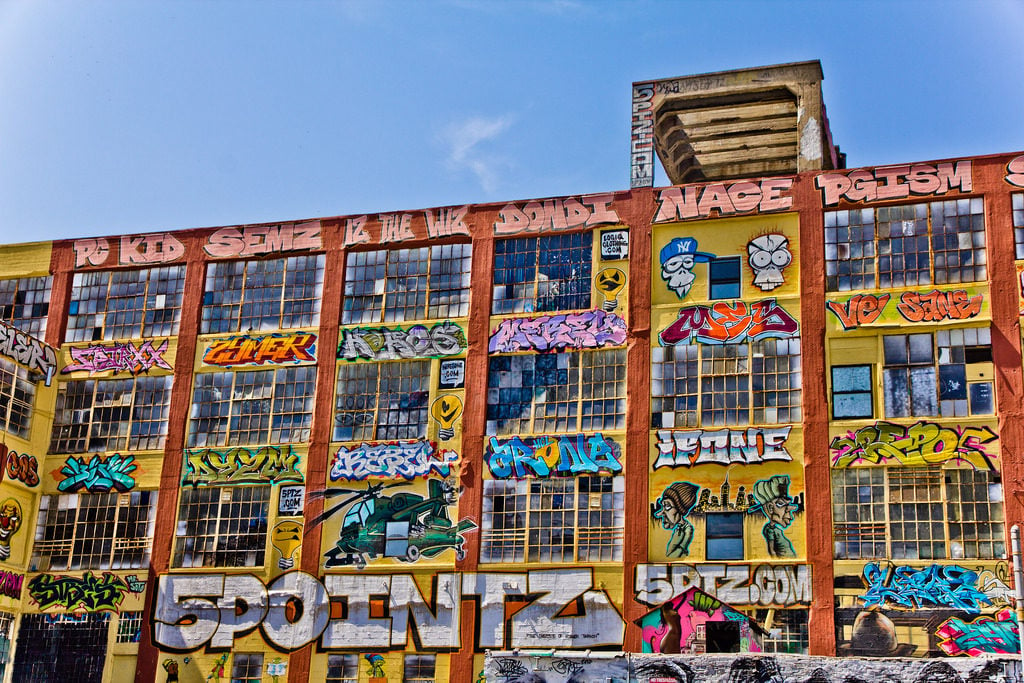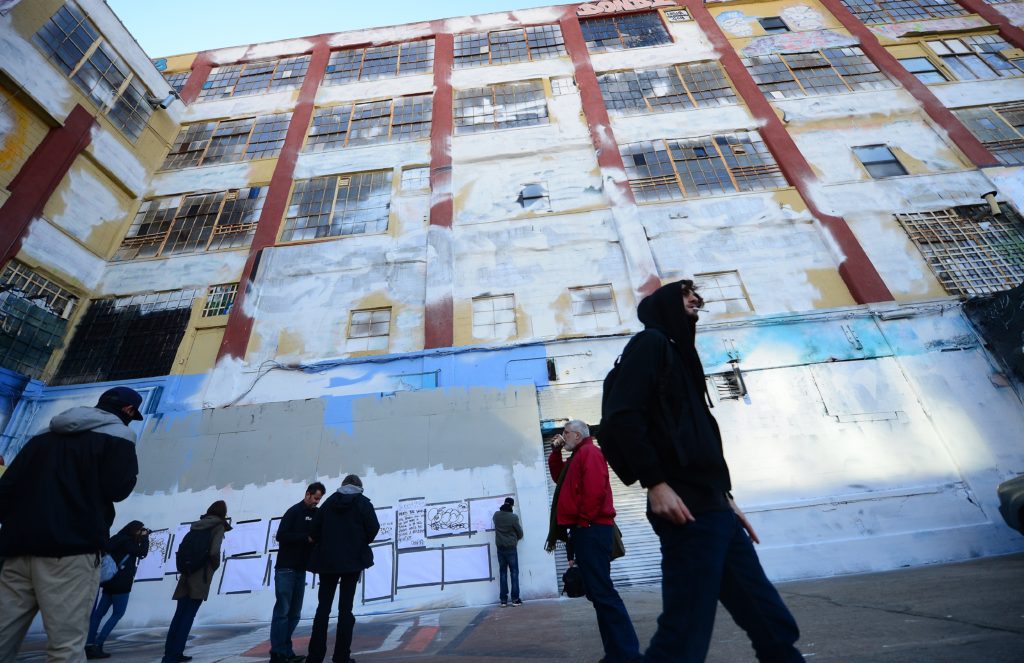Law & Politics
After 5Pointz, Can Artists and Developers Ever Work Together Again? Experts Lay Out the Way Forward
Here are seven takeaways from the landmark case.

Here are seven takeaways from the landmark case.

Eileen Kinsella

Artists, real estate executives, and copyright experts are still absorbing last month’s shocking conclusion to the closely watched 5Pointz trial. On February 12, a judge ruled that New York property developer Gerald Wolkoff must pay $6.7 million to a group of graffiti artists for painting over their work without warning in 2013.
Most agree that the decision was entirely unexpected—and many suspect it will have far-reaching ripple effects for artists and real estate developers in the future (though not necessarily the ones you might expect).
Wolkoff had always made it clear to the artists that their arrangement—which gave them free reign to mark up his massive building site in Long Island City, Queens—was temporary. Nevertheless, Judge Frederic Block ruled that the property developer had to pay up for violating the artists’ rights under a broad legal provision known as VARA (Visual Artists Rights Act). The buildings were later demolished to make way for high-end condominiums. The case offered a rare example of the VARA provision in action; most such cases are settled before they ever reach the courtroom.
Another surprising element of the decision: Even though the judge conceded that none of the artists had actually established at trial that there was a viable market for their works, he nevertheless awarded them maximum statutory damages ($150,000 per destroyed work, for a grand total of $6.7 million).

People walk in front of New York’s graffiti iconic spot “5Pointz” as it stands defaced with white paint covering most of the art work, after the building was painted white on November 19, 2013. Photo: EMMANUEL DUNAND/AFP/Getty Images
Not surprisingly, Wolkoff is planning to appeal the decision. His attorney did not respond to artnet News’s requests for comment, but Wolkoff told a local paper, the Queens Gazette, that the judgment “makes no sense” and that he’s confident that the appellate court will realize “how ridiculous this whole thing is.”
Until then, however, graffiti artists and real estate executives alike are left to grapple with the decision as it stands. With the help of legal and art experts, we broke down the most important lessons of this landmark case.
Anyone who has ever spent a few moments in a courtroom knows that what the judge says, goes. According to observers, and the judge himself, Wolkoff sometimes appeared to check his good manners at the door—and his attitude did not help his case. In the lengthy 100-page ruling (50 pages of which were text, and the remaining 50, visual “exhibits” of the destroyed work), Block wrote that even though Wolkoff’s testimony was “truthful,” he viewed him as “a difficult witness,” who “frequently ignored or challenged instructions,” and was “argumentative and prone to tangents.” Michael Salzman, co-head of the art law practice and general counsel at Hughes Hubbard & Reed, notes: “The first rule a lawyer tells a client is: Don’t anger the judge. And that’s what seems to have happened both outside the court and at the trial itself.”
When property developers, museums, or other landowners commission an artwork, they can ask artists to agree to a “waiver” of their moral rights under the copyright act. This signed agreement lays out the particular rights the artist is waiving, such as the right to withdraw his or her name from the work in the event it is damaged or moved. In the wake of the 5Pointz decision, property developers who work with artists are far more likely to ask for such a waiver, experts say. Wolkoff always told the artists that he would do as he pleased with the buildings—but that understanding was never put in writing.
“If [real estate developers] are going to be allowing art or commissioning art for a new building or someone is putting art in a plaza or lobby, get a waiver and that will be that,” Salzman says. “If it’s a big-name artist, you might not be able to get a waiver, but at least try. This is a case that never really had to happen.”
Moving forward, projects like 5Pointz are unlikely to proceed without a bit more paperwork exchanged between artists and property owners. “Developers are going to treat this type of art with much more respect and care, and not as loosely as they may have in the past,” says Ali Ebrahimi, a real estate broker with Compass in New York, and the founder of artREAL, an art and real estate company. “For better or worse, there will certainly be more caution and legal agreements between developers and these artists going forward.”
On the flip side, notes the art lawyer Sergio Muñoz Sarmiento, developers might begin to favor less established artists “who won’t have negotiating power” to fight for a better deal. “What this tells me is that these kind of art world transactions—like transactions in many other industries—run so fast that parties either forget to seek legal advice or make the business decision to take risks,” he says. Moving forward, he says, there should “be a little more caution on both sides.”
Block took particular umbrage at Wolkoff’s decision to whitewash the artworks in the middle of the night with no warning. He described it as “an act of pure pique and revenge.” He also noted that Wolkoff had a permit and proper permission to demolish the buildings 10 months later, but chose to jump the gun and paint them overnight instead. The fact that Block deemed the action “willful” was key to the artists’ victory, because an artist is eligible for higher damages if the offense is deemed “willful” rather than “innocent.”
As Block described it in his ruling: “Wolkoff directed the whitewashing of virtually all the artwork on the 5Pointz site with rollers, spray machines, and buckets of white paint… If not for Wolkoff’s insolence, these damages would not have been assessed. If he did not destroy 5Pointz until he received his permits and demolished it 10 months later, the court would not have found that he had acted willfully.”
New York magazine’s Justin Davidson has argued that the 5Pointz ruling was actually bad news for art, because it is likely to discourage real estate developers from collaborating with artists in the future. But some art law experts doubt the decision will have such a dramatic effect.
Renee Vara, who testified at length at the trial, has worked with developers of hotels including the Viceroy and the Four Seasons. She said these businesses use artists “to bring media attention to their spaces,” and that the practice is unlikely to end as a result of the decision—though it may become more tightly regulated.
While the 5Pointz decision has the potential to make the developer-artist relationship even more fraught than it was already, both sides should remain open to compromise. Muñoz Sarmiento says “artists need to become more creative” in coming up with solutions they can live with. “A developer could say, ‘I want you to install this mural but I might want to build up. Can you make the mural or the artwork or the sculpture in a way we can work with it?’ Part of the problem is that in many cases the art can’t be moved. Sometimes the property developers don’t want to get rid of the artwork—they just want it moved.”
VARA specifically aims to protect artworks that have achieved what the law describes as “recognized stature”—but that term is extraordinarily broad. It is also difficult to apply to graffiti art, which has less of a market track record and is not preserved in the same fashion that a public sculpture might be.
At trial, the 5Pointz jury found that some graffiti works had recognized stature, while others did not, either because “they were not part of the curated 5Pointz collection” or they had failed “to attract significant third-party attention or social media buzz during their short life spans.”
Barry Werbin, a copyright specialist and attorney at Herrick Feinstein LLP, says the definition of “recognized stature” is far from settled. “In my view, under VARA, each work has to independently be proven to be a work of recognized stature and that’s where I think there could really be issues on appeal,” he said. “5Pointz was a recognized art project but when we drill down to each of the works it’s a very different story.”
Dean Nicyper, an attorney with Withers Worldwide, notes that graffiti artists shouldn’t interpret the 5Pointz case as an invitation to tag buildings with abandon. “Aerosol artists should not assume that a court will reach the same conclusion if art is placed on a building without the building owner’s permission,” he says. In other contexts, courts have ruled that a graffiti artist who paints a wall without permission has no rights in the painting.
Still, others say the case will have a lasting effect on the balance of power between property owners and artists. As Ali Ebrahimi notes, “I think this further legitimizes graffiti art, not only in the art world—as we’ve seen happening in the last decade—but now with developers as well.”